Racing at Cartmel probably began in the 15th century when Brother John wagered a mug of ale with Brother Cain at Cartmel Priory that his mule could give his fellow monk two lengths start and beat him back to the Abbot’s orchard. Nowadays Cartmel is one of racing’s precious smaller jewels. The tiny track nestled in a Cumbrian valley and reached by a tangle of winding country lanes not only attracts jump racing crowds of up to 20,000 (only Cheltenham and Aintree do better) but it also gives them an experience not to be found anywhere else.
There’s nothing grand about Cartmel: as its owner, Baron Cavendish of Furness, once drove the late Queen Elizabeth past, she exclaimed with incredulity: ‘You call that a racecourse!’ Where else would the racecourse commentary declare: ‘And as they pass the Sticky Toffee Pudding Shop Brian Hughes moves into the lead.’ (The connections of all placed horses get a pudding along with their prize money.)
Winning owners don’t go home from Cartmel seriously enriched. It stages no Hennessy Gold Cups or Triumph Hurdles. But as Lord Cavendish notes: ‘Jump racing isn’t about money, it’s about love.’ The gatemen wear pink T-shirts, blue vests, flat caps and cheerful smiles. Nobody goes to Cartmel to be seen; they go there to enjoy themselves. It is part carnival and funfair, partly the biggest collection of picnics you’ve ever seen – right up to the winners’ enclosure. Some racetracks frown on barbecues and people bringing in their own food and drink. Not relaxed Cartmel. Most racecourses ban or discourage dogs; at Cartmel you cannot move three steps without encountering a furry friend. I felt half-undressed without my flatcoat retriever.
I’ve spent time on tracks with trainers, owners and jockeys, but never before with a racecourse owner. I am sure, though, that nobody else does it quite like Lord (Hugh) Cavendish. The sort of reasoning man who as a convinced Brexiteer urged in his valedictory speech in the Lords that it was time to make friends again with those in Europe who were bruised and puzzled by Britain’s exit.
Lord Cavendish is very much a man of his community. The assurance that comes with 17,000 acres is coupled with an obvious sense of obligation to the 300 livelihoods dependent on him and while the Holker Hall estates have been handed over to daughter Lucy, Cartmel Racecourse is assuredly still his baby. He bought out the ex-military management in 1998, built a new grandstand and installed a watering system. Cartmel may be small but it is innovative: it was one of the first courses to install mist-sprayers to cool down its equine athletes, snapped up second-hand after the London Olympics.
I trailed at a discreet distance as Lord C, in red bow tie and Rumpelstiltskin boots, toured not just the racecourse but the funfair stalls full of fluffy toys, the vans selling Cluckin Mama and Bhaji pizzas and the Cumberland sausage shops. Every vendor seemed to know him. The jockeys’ changing rooms were inspected closely – ‘I can’t bear a loose lavatory seat’ – and the ladies running the day’s appointed charity were sought out and invited to the directors’ marquee along with their collection tins. I overheard him urging the course commentators to check out any trainers and jockeys at the track for the first time: ‘They must be made to feel welcome.’ After the third race, he was on the track with the ground staff replacing divots. No wonder that one local grabbed me to insist: ‘Lord Cavendish is our national treasure – on a local scale.’
Racing that day was entirely appropriate for such an intimate track. Leading jump jockey Sean Bowen’s second winner of the day Fairlawn Flyer, trained by father Peter, was led up for the three-mile chase by his owner Ross Williams who bred him and rides him out occasionally. Said Sean afterwards: ‘Ross is brilliant for Mum and Dad. He harrows the gallops and looks after the muck heap – he does any odd job around the place.’
After the fourth, I saw winning jockey Jack Quinlan voicing a video for connections and giving all the credit to the horse whom he’d had to extricate from trouble after another runner pretty well fell into his lap: ‘He knew how to win even if his rider didn’t.’ ‘You were a bit hard on the jockey,’ I said. ‘Not really,’ he replied with a grin. ‘It was a bad ride.’
In the fifth Leah Noreci, a 10lb claiming conditional on only her sixth ride, came home a street clear on local trainer Jimmy Moffatt’s Cuzco Du Mathan after a patient ride. It was a first win for the horse and for Leah whose Albanian father married into the Moffatt family. Lord Cavendish had told me the Moffatt horses do well at Cartmel, so despite a lack of encouragement from the trainer I backed Moffatt’s entry in the next, Mr Rumbalicious, and went home happy when he came in at 16-1. I am pretty sure the other 14,000 present eventually went home the same way. Win or lose, Cartmel’s informal authenticity lifts the spirit.
Got something to add? Join the discussion and comment below.
Get 10 issues for just $10
Subscribe to The Spectator Australia today for the next 10 magazine issues, plus full online access, for just $10.
You might disagree with half of it, but you’ll enjoy reading all of it. Try your first month for free, then just $2 a week for the remainder of your first year.

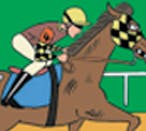
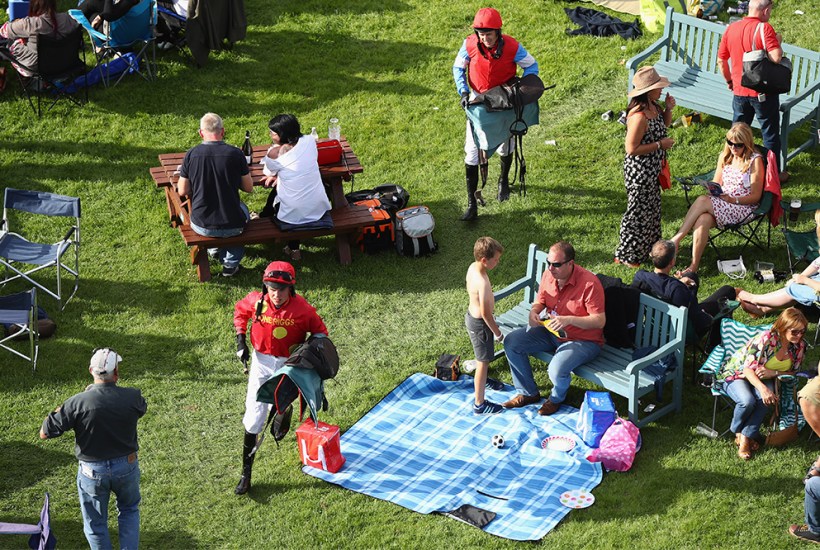
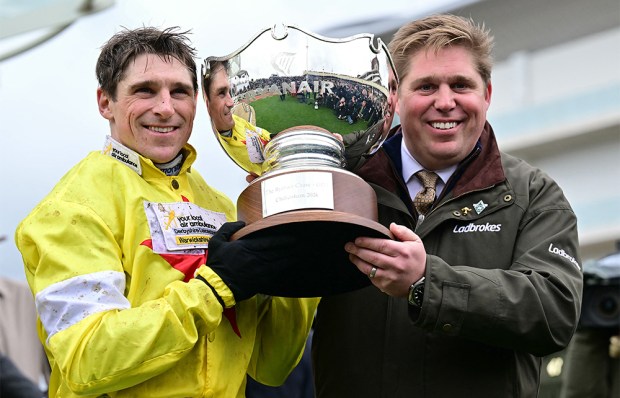
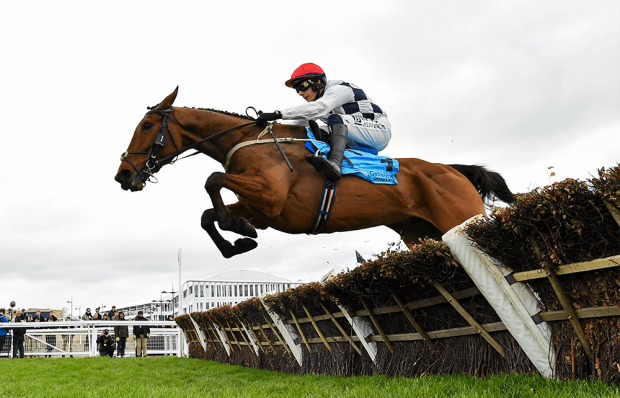
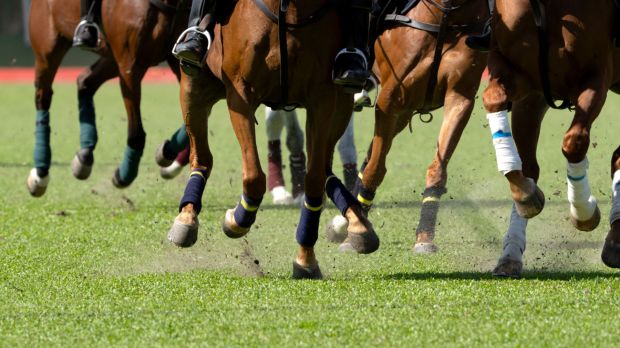
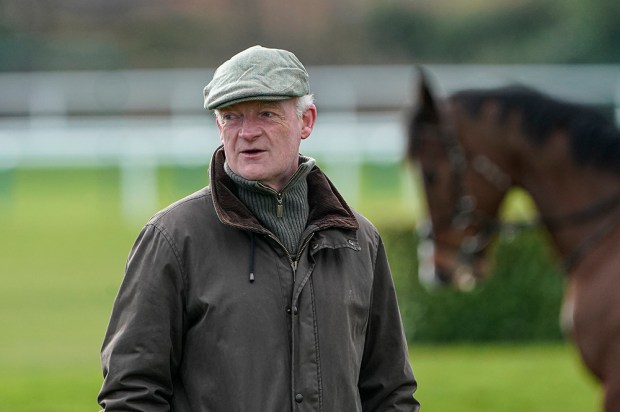
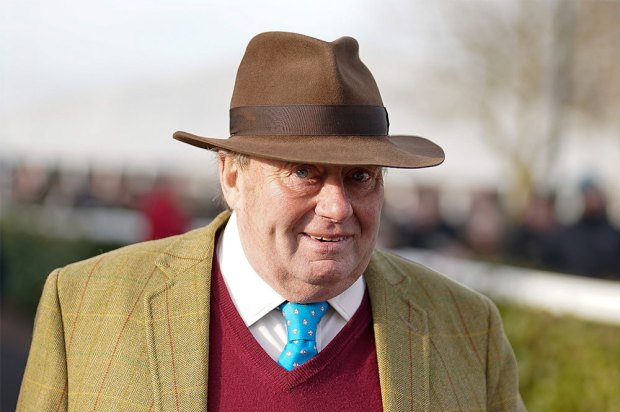







Comments
Don't miss out
Join the conversation with other Spectator Australia readers. Subscribe to leave a comment.
SUBSCRIBEAlready a subscriber? Log in